Some urban legends may have a hint of historical accuracy in their origins, and some pieces of kitchen cookware and utensils are in fact inherently risky to use. A cast iron skillet will hurt if dropped on your toes, and a dull knife is prone to cutting fingers… and pressure canners build up hot steam.
So where did this idea that pressure canners or cookers are more dangerous than a cast iron skillet or dull knife come from? And is it still relevant today?
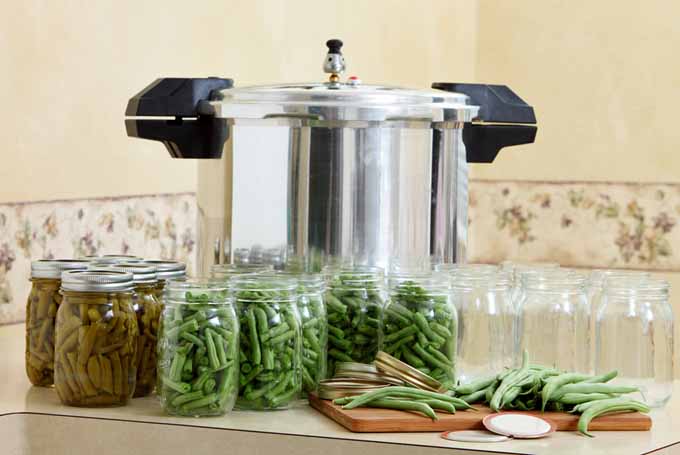
We’ll get to that a little further on, as we explore exactly how the many different features of today’s models keep us safe. These features are designed with multiple backups so you’ll feel confident using them time after time, eliminating any lingering doubts from your mind once and for all.
The Debut of the Convenient Home Unit
Back in 1938, the first of the so-called saucepan-style canners was debuted at a trade show in New York City. Dubbed the “Flex-Seal Speed Cooker,” it received only lukewarm interest. However, at the New York World’s Fair the following year, National Presto Industries introduced their Presto pressure cooker with immediate success.
For the consumer’s convenience, it featured an interlocking lid that was easy to open and close, and eliminated the monstrous lug nuts and clamps of earlier home models. In the vibrant post-depression economy, demand for this user-friendly style grew quickly.
Unfortunately, production ground to a halt when the U.S. entered WWII, because aluminum was diverted to the war effort. During this time, as part of a plan to reduce the strain on food rations, the War Production Board promoted self-sufficiency programs.
Citizens were urged to plant victory gardens for home-grown consumption, with the excess produce to be canned – theoretically, to last a family until the next year’s harvest.
To support these programs, some steel was made available for the production of pressure canners during the war, but there wasn’t nearly enough to satisfy demand.
Not only were those at home urged to be frugal, women began at this time to work in factories and defense plants. Cousin to the pressure canner, the pressure cooker quickly gained popularity for convenient meal planning and preserving.
One kettle was often shared among family, friends, and neighbors to compensate for the short supply. By the war’s end, demand for both canners and cookers was intense, opening the door to a flood of new manufacturers who aimed to meet that demand – for a handsome profit.
A Myth is Born…
Production boomed after the war, and kettle manufacturing plants grew from about 10 pre-war to around 50 post-war.
Unfortunately, many were inferior, cheap quality cookers – with profit being the driving factor rather than the consumer’s safety.
As you might guess, this was the era of flying lids and exploding kettles.
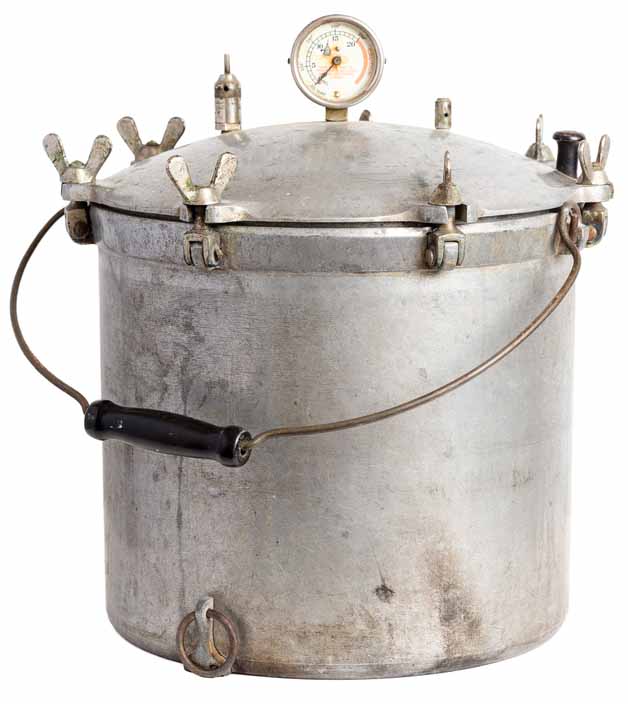
Kettles from the 50s had a single weighted pressure regulator that could easily become clogged with debris. And with no alternative route for the steam to escape, the pressure would continue to build until something had to give.
When any system is under extreme pressure, the weakest component fails – in this case, it’s the gasket or lone valve. Either of these failures releases pressure violently, and creates a space for steam and hot liquid to be escape. With enough pressure, failure of the lid latch is also possible, resulting in airborne expulsion of the lid.
In addition to the valve or gasket blowing, hot water spewing from the gap, and perhaps a lid missing your ear by a cat’s whisker, an abrupt reduction in pressure lowers the boiling point of the remaining water, producing even more steam.
Clearly, there was ample reason to doubt the safety and efficacy of that decade’s models.
By the end of the 50s, substandard materials, inadequate backup safety features, and a lack of direction on proper use turned the tide of popularity.
The Wave of Change
Naturally, as popularity waned, so did production. Only the industry stalwarts were able to survive the prevailing lean years.
In the mid-1970s, significant changes were made to improve safety – and sales. The primary valve was redesigned to improve performance, and secondary relief valves were introduced as well.
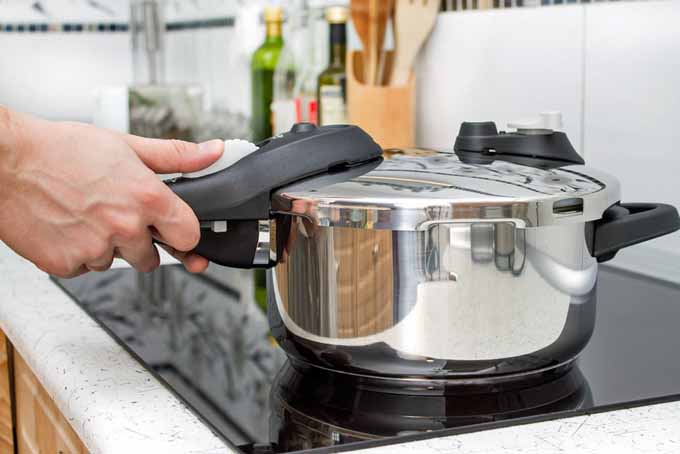
Another important change was the addition of lid latches and locks that would open only when pressure had dissipated, eliminating accidental openings when it was unsafe to do so. These improvements helped to ease the consumer’s reluctance to work with this type of kitchen equipment.
As the 1980s progressed, interest in pressure kettles returned. Revamped features, cookbooks with contemporary recipes, and modern style lines proved to be enticing and reliable enough to draw new customers to the market.
A Redundancy of Safety Features
Today’s models are typically designed with two or three redundant safety valves. This way, if the primary and main overpressure vents should ever become plugged simultaneously, there’s still another route for the pressure to escape safely from the kettle.
Another portal for the steam to escape is a cutaway window on the edge of the lid, found on some kettles that employ a gasket. A buildup of pressure will blow the sealing gasket out of the window, should the primary and overpressure vents fail together.
Dual pressure regulators are another feature found on many contemporary models, with a dial gauge and a counterweight vent to more accurately regulate pressure levels.
Most will have an interlocking lid or lid lock, with a spring-loaded piston that prevents the lid from being opened until the internal and external pressure are equal.
On many models, if all of the safety mechanisms are not correctly aligned and engaged, the kettle simply won’t pressurize the contents. Be sure to keep all of the components clean.
Instructions for use have also improved, with established brands offering comprehensive owner’s manuals that give clear directions for safe use, tips, recipes, extensive online tutorials, and well-manned customer service help lines.
Today’s models have to meet the testing rigors of recognized safety testing agencies, such as the UL (Underwriters Laboratories) or CUL (Canadian Underwriters Laboratories), before being approved for sale.
The Home Canner’s Essential Safety Checklist
Print this one out, and keep it with your canning cookbooks! Here are a few points to keep in mind to ensure that you have a safe and successful canning season, if you plan to use this type of equipment:
1. You Are #1!
The most important safety feature is you. So read your instruction manual and recipes thoroughly, and don’t cut corners.
This is of particular importance with any low-acid foods processed in pressure kettles, as reaching and holding the required temperature of 240°F is critical to killing harmful bacteria like Clostridium botulinum.
2. Protect Yourself
Never expose any part of your face, arms, hands, or other body parts to the hot steam – it is extremely hot, and will cause serious burns.
Always use safety gear, such as protective gloves or oven mitts.
3. Check All Components
If you’ve purchased a new model, check to ensure that all parts are present and in good working order.
For all versions, new or old, check that valves, gaskets, clamps, wingnuts, and so on are in good condition prior to when you plan to can. It’s also a smart idea to give your kettle a test run to check the seal on all of the various components.
If you have a vintage unit, consider updating to a new model for the obvious safety reasons – and because it can be very difficult to find replacement parts for older models.
Check out Foodal’s review of the best models on the market today here.
4. Leave a Little Room
Watch your head space. As the temperature utilized here is considerably higher than that of a boiling water bath, you’ll generally need more head space – usually twice as much, if not more.
5. Test All Gauges
Test gauges for accuracy with a master gauge testing unit. Testing services are usually available at your local hardware store or household appliance center, or your manufacturer may be able to test gauges for you.
In the US, many cooperative extension offices offer gauge testing.
Welcome to 21st Century Canning and Cooking
Even for the novice cook, today’s models – with their precision-geared gauges, lid locks, and multiple pressure release plugs – are equipped to be safe, dependable, and reliable.
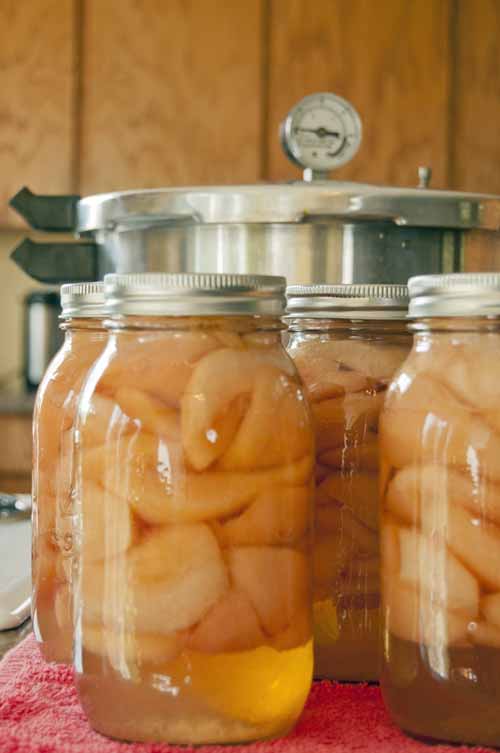
Don’t let the horror stories from bygone eras scare you away. The 21st century pressure canner has been completely redesigned and re-engineered with numerous safety features, and it’s manufactured with state of the art production techniques.
Long gone are the models that could propel a lid through the air.
Just remember to read and follow all instructions carefully, be prepared with a trial run, and give yourself some time to become comfortable with your amazing new cookware. You’ll be stocking your pantry with delicious canned veggies, salsas, jams, soups, stocks, and more in no time!
So go pick what you can from the garden, stock up on whatever produce is on sale, and start canning! If you have any questions or insights to share, drop us a line in the comments below. We’d love to hear from you!
About Lorna Kring
Recently retired as a costume specialist in the TV and film industry, Lorna now enjoys blogging on contemporary lifestyle themes. A bit daft about the garden, she’s particularly obsessed with organic tomatoes and herbs, and delights in breaking bread with family and friends.

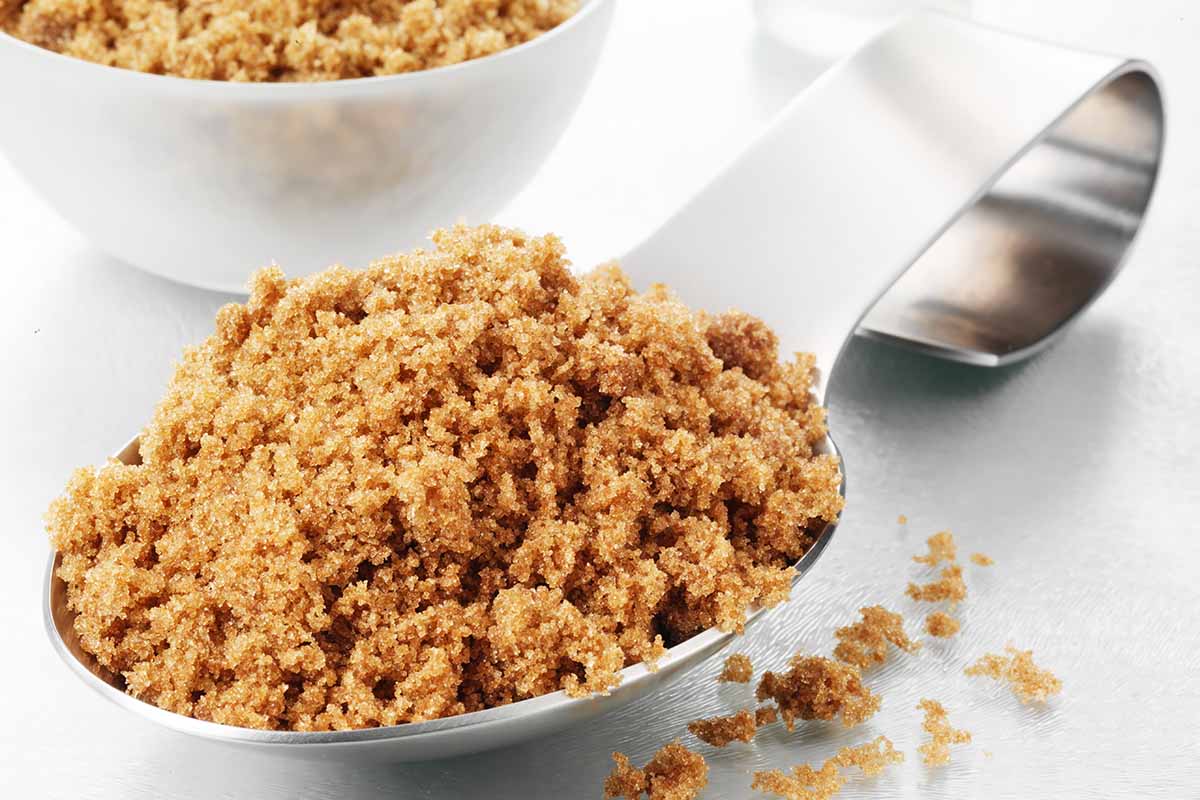
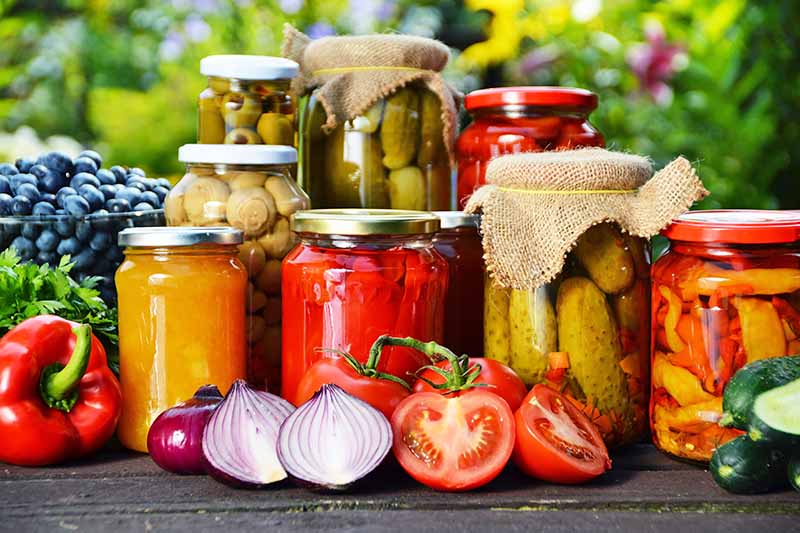
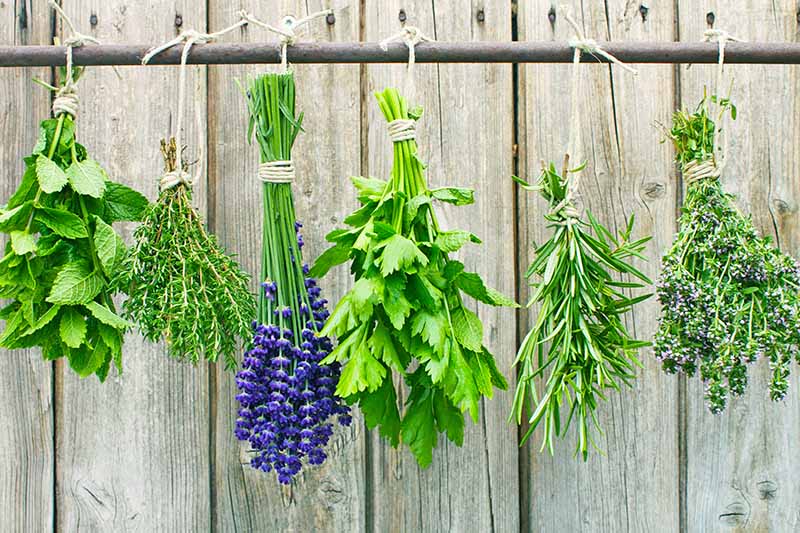
These are great tools. I can’t believe how quickly they can cook things that usually take forever. I love mine now.
In fact, I used it for making a pork roast last night. It was so tender and good that I will be making another one soon, probably to make pulled pork. I’ve also made ribs and a rump roast. Next up will be some chicken.
I also love the fact that I don’t have to use the oven for hours on end and heat up the whole kitchen when we’re having a heat wave. I can just use my favorite new piece of kitchen equipment instead.
They’re amazing cookers Zyni, it’s like a kitchen time machine the way they transform tough cuts! Thanks for sharing…
So what does everyone think about cooking fried chicken in a pressure canner with oil? By pressure canner I’m talking about the types talked about here. Mine is a large 22qt and I have cooked chicken in it with oil. I’ve heard the oil vapors coming from the weighted release can ignite? I call bs lol. Can someone please clear this up. I’d love to do it again but would rather not worry about this while doing so. By the way I used a KFC recipe and it was the best chicken I’ve ever made!!
How much oil are you using, Ken, and at what PSI? Deep frying in a standard pressure cooker is NOT recommended for safety reasons, though shallow frying or “open” frying (with the lid off the appliance- not cooking under pressure) are safer and more common. No more than about 1/2 cup of oil is typically used for shallow frying under pressure, depending on the size of the cooker.
It’s important to remember that oil heats more quickly than water. Oil vapor is combustible when it meets or exceeds the flash point, meaning it will catch on fire if it comes into contact with an ignition source. The danger increases as temperatures continue to climb – at the auto-ignition temperature, oil vapor will ignite simultaneously without an ignition source such as a heating element or flame. Neither of these metrics should be confused with the smoke point, or the temperature at which different types of cooking oil will begin to smoke. But this should be used as a warning sign in cooking as smoke is an indicator that oil is too hot and approaching the flash point.
While the smoke point of refined peanut oil, for example, is about 450°F, the flash point is around 600°F and the auto-ignition point is about 700°F. The exact numbers here can vary from one sample to the next, and depend on the type of oil as well as whether or not it is refined or unrefined.
Since you referenced KFC, what you might be looking for is a pressure fryer – this type of appliance makes broasting at home possible, and this is the technique that’s used at some chain restaurants. Electric pressure fryers have a large tank, an outlet pipe for steam, and a drain to release the oil. Additional temperature controls and a specialized valve allow for safe deep frying. Frying under pressure causes the boiling point of the water inside the chicken to rise, so it cooks more quickly while retaining more moisture than it would if cooked under normal atmospheric pressure via typical deep or shallow frying. I’ve also read that the Colonel’s original recipe called for a higher cooking temperature and PSI than what’s typically used in pressure frying today, in part because chickens back in the ’60s were typically older and tougher when they were butchered than what’s standard today.
Thanks for the info Allison. I was using a 22qt pressure canner with 2-3 inches of vegetable oil. I used a KFC seasoning recipe to bread chicken breasts. I heated the oil to 350 and put the chicken in and closed the lid. I used the 10lb weight on top and cooked for 8 minutes. It builds pressure but not like in the canning process due to the short cooking time. The chicken turned out nice without a fire incident lol. From what I have read I’m not sure I’ll try it again but if I do I’ll most likely do it outdoors.
You’re welcome, Ken!
Any tool in the kitchen can be dangerous given the right circumstances. Buy quality products, keep them cleaned and in good repair, and use them as directed. The right tool for the right job applies in the kitchen just as much as it does in the shop or garage.
Absolutely! Treat your tools well, and they’ll treat the user well.
A pressure cooker is a must-have if you are on a budget. I have taken the cheapest cuts of meat that normally would be like shoe leather if cooked quickly and made them into gourmet dishes using a pressure cooker. The article was definitely spot-on about safety. The models today are super-safe, but it is always best to follow the directions given to you by the manufacturer.
It is a great way to use cheaper cuts of meat. I think that was the original purpose. I was honestly surprised by how well it works. I expected the meat to be tough or lack flavor like it would if it had been boiled, but that was not the case.
My brother was gifted one as well, but he hasn’t tried it. I think he’s a little nervous, so I’ll have to send him over here to read up on it. I can’t say enough about how convenient I find it. I wish I would have jumped in a long time ago.
So true Lisa, the quick transformation from tough to tender can’t be beat. Thanks for your thoughts!
I always had the fear that the lid on my pressure cooker would pop off and hit me in the face! I know now that this is just a myth, although this pointed out that you always have to protect yourself. So informational, thanks.
I thought I was the only one afraid of a pressure cooker! I guess it’s good to know that I wasn’t just imagining my fears of a kitchen pot blowing up. My mom used to use a pressure cooker all the time when we were kids and her roasts were so delicious. When the cooker would begin to spew, rattle and make noises, I would head out of the kitchen. I’ve never used a pressure cooker and probably never will, but it’s good to know that manufacturers are making them safer to use because they sure do make the food taste good.
Lol, that sounds just like my Mum’s old one! And they do produce delicious roasts…
It’s funny, I thought I was the only one who grew up being afraid of the pressure cooker noise. Now that I’m grown though, and I have meals of my own to prepare, it’s an irreplaceable must-have in my kitchen. I love just how fast and easy it makes cooking things like roasts.
I think they intimidated a lot of kids Norma! But it’s really awesome how resourceful they are now. Thanks for your thoughts!
I also used to be afraid of the noise from the pressure cooker when I was a child and would stay clear of the kitchen whenever my mother was using it. Now that I have meals to prepare and very little time usually, it has become one of the most important appliances in my kitchen. I also agree that any appliance can be dangerous if not used in the correct way.
They’re great for saving time! Thanks for your thoughts.
I want to can cauliflower but everything I have found states it is a low acid food and it is impossible to pressure cook can. Does any one have evidence to support or refute this?
Well, yeah… except for an occasional minor mishap.
I have a fairly new pressure cooker ( the most expensive one on the market) however the last couple of times I have used it I have not been able to get steam out of the steam release presumably because the pressure safety devices have become blocked. When this happens you have no way of knowing when the pressure is gone and if you are tempted to open it too soon you will learn where the myths came from. I attempted to clean the pressure safety devices following instructions in the manual, these instructions were totally irrelevant to the model I had even though the manual came in the box with the cooker.
Please be very wary if buying a pressure cooker. This is from someone who has worked in the oil and gas industry for 40 years and has had a lot of experience with steam.
What about the issue of the aluminum leaching into your foods? I have a vintage Presto Immersible Pressure Cooker which I’m afraid to use for this reason. I grew up with Wear Ever aluminum pots and pans so I figure I have already got my allowable dose of aluminum on board!
I have read recently the electric pressure canners don’t reach the proper temp to destroy botulism. I have already canned veggies soup and tomatoes and much more. Mine is a Presto which brand name I trust. Do I need to be concerned?
Temperatures above the boiling point of water at sea level (212°F) are required for destroying heat-resistant bacteria and spores. Most electric pressure canners reach 240°F, the minimum temperature required for canning low-acid foods like tomatoes at home, while water bath canners may not reach this safety threshold.
According to the Presto website, the Presto Precise Digital Pressure Canner meets USDA home pressure canning requirements, and holds the exact temperature required for safe canning, even at high altitudes. If you have any concerns about the product that you own, I recommend contacting Presto customer service directly via their website. Always be sure to follow the manufacturer’s directions.
All of a sudden my pressure canner has pits on the inside bottom. Is this ok to still use or is it dangerous?
We’d recommend reporting damage to the surface to the manufacturer of the product.
Hello I have a pressure cooker that looks like a 1947 national presto cooker. The lid is locked, still under pressure. The pot has cooled for 24 hours. How do I release the pressure? Thank you
by now, in 2023, I sure hope you got the lid open 🙂 Can’t still be under pressure after 24 hours but may have a vacuum. Best to replace the original regulator with a modern stem and jiggler. Also, I think that model (No.7 ?) has a rubber safety release in the middle of the top. That should also be replaced with the style that prevents a vacuum forming. These upgrades are available readily on-line. john
I have recipes for meals to cook in a pressure cooker….. all of them say “these recipes are intended for pressure cooking and should not be canned”. Why can’t you can something that you cooked in a pressure cooker???
Thank You , Ron
Good question, Ron. A pressure canner and a pressure cooker are two different appliances, and recipes designed for pressure cooking may not attain the correct temperature or acid level for safe shelf-stable canning.
Are old (1944 manufacture date) pressure canners unsafe due to an explosion risk due to aluminum stress cracking over an extended period of time (75 years)?
Wow, an antique pressure cooker! As for putting it to use in the kitchen, I would proceed with extreme caution. While something like cast iron can stand the test of time and be put to good use over the course of many generations with proper care, aluminum pressure canners are a different story.
Are the gasket and seal in good working order? This seems unlikely, over the course of 75 years. If you see any visible cracks, it should not be used, and any parts that have cracked or degraded will need to be replaced (if you can find replacement parts that fit).
Unfortunately, cracks in aluminum can be very fine, and they won’t necessarily be apparent to the naked eye. If you were checking for cracked aluminum in something like an engine block, for example, you could spray it with something like Spotcheck which turns red to reveal cracks – but this type of product is toxic and it should never be used anywhere near your cookware. Visible pits and surface etching in vintage aluminum bakeware that’s put in the oven might not be as much of a concern, but I wouldn’t rely on a pressure cooker for safe use.
If all it needs is a good cleaning, you could theoretically test its ability to hold pressure by filling it with a few cups of water and testing whether it comes up to pressure and holds the liquid. Dripping water or a pressure gauge that doesn’t rise are indications that the gasket and/or seal are faulty. But again – aluminum that has become pitted with age is of little concern in a baking sheet or frying pan, whereas cracking and other damage to the metal indicates that using the canner will be hazardous.
Beyond that, another potential issue is the accuracy of the gauge. If you can’t tell if whatever you put inside has come up to full pressure and that it is able to hold pressure for as long as you need it to via seals that are in working order, you won’t be able to can food safely.
If you have any old canning books, I’d advise against using those as well- anything published before the 1990s is unfortunately not up to modern-day food safety standards. Part of the beauty of electric pressure cookers and even today’s stovetop models is that they include updated safety features that weren’t available back in the ’40s.